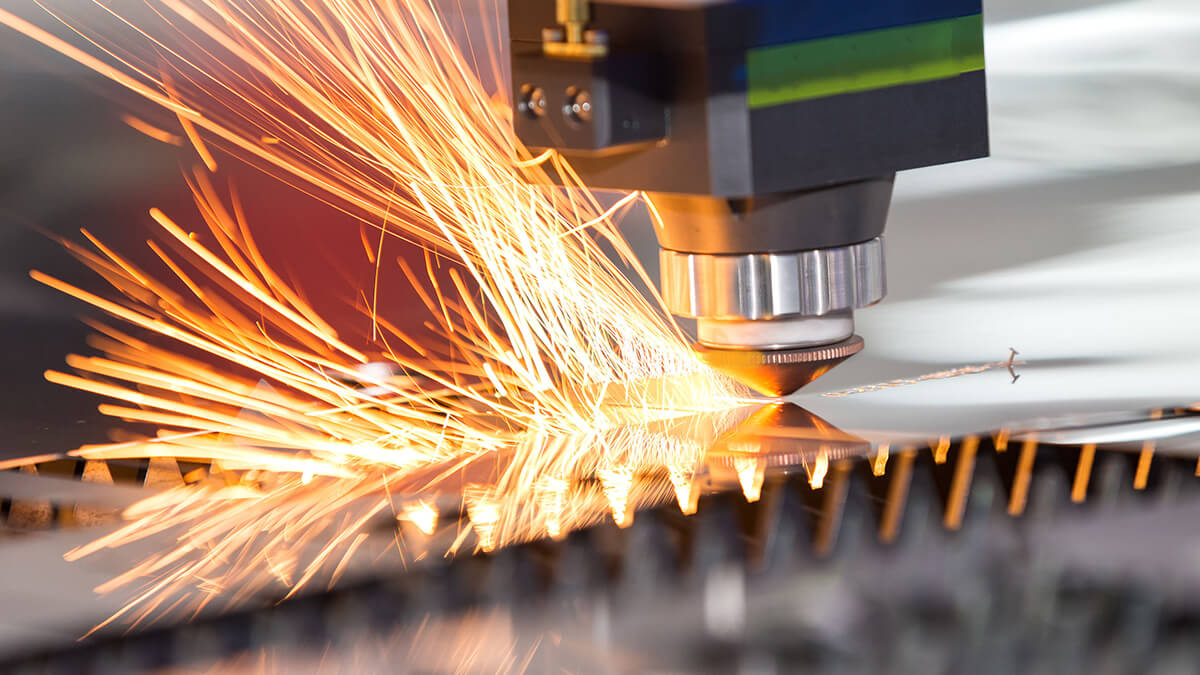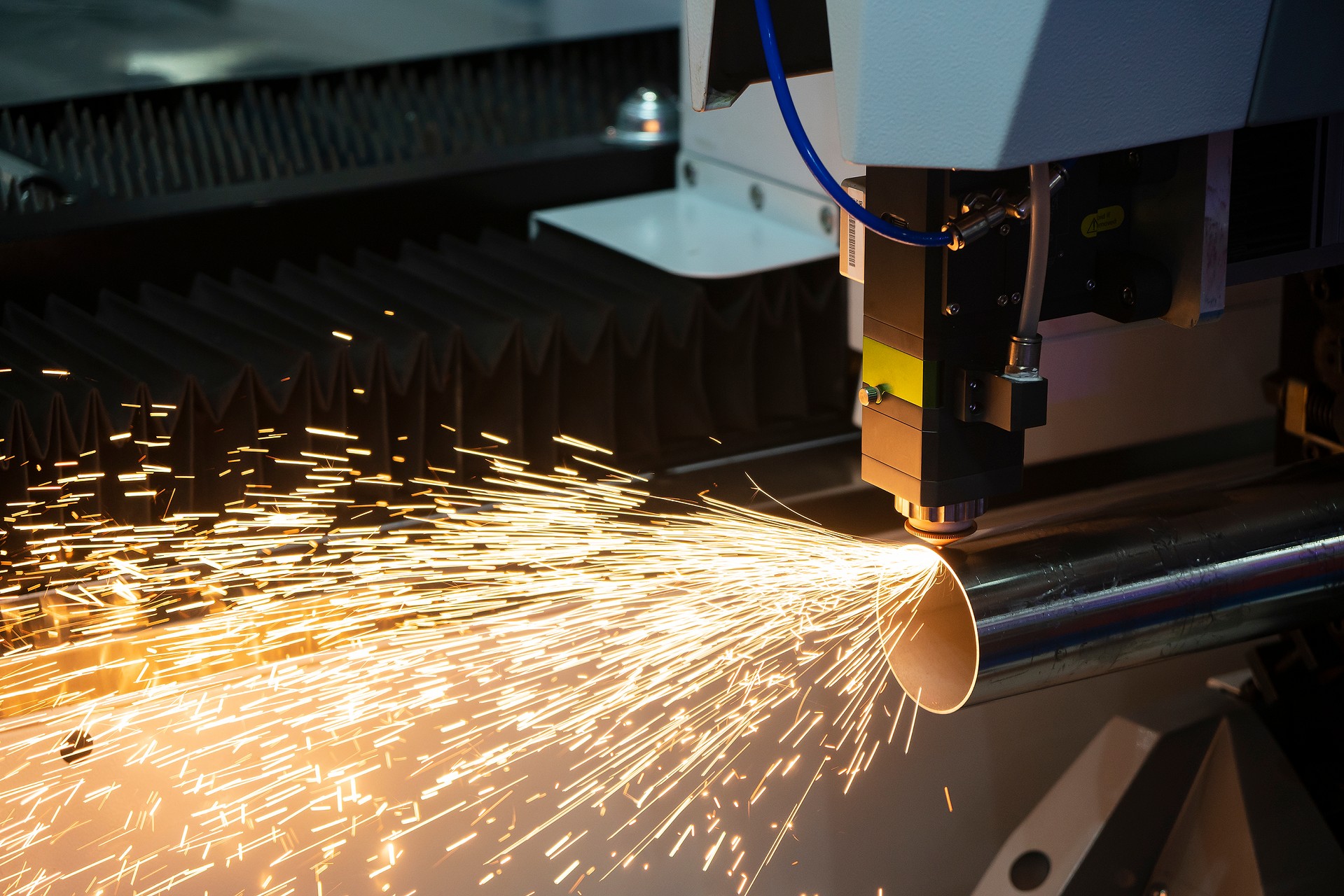Fiber laser welding is an advanced welding technology that uses a highly focused laser beam generated through fiber optics, enabling accurate and high-speed material joining with minimal thermal distortion. Fiber laser welding technology has revolutionized manufacturing industries with its precision, efficiency, and versatility, offering innovative, efficient, and environmentally friendly solutions.
The Development of Fiber Laser Welding
The concept of laser welding dates back to the 1960s, when the first lasers were developed. Initially, the technology was limited by low power output and high operational costs. However, the advent of fiber lasers in the early 2000s marked a turning point. Unlike earlier laser technologies, fiber lasers offered higher beam quality, greater energy efficiency, and reduced maintenance costs.
Initially, CO₂ lasers dominated welding applications due to their high power and ability to work with metals. However, the 1980s marked the beginning of fiber laser development, driven by the need for more compact, efficient, and versatile laser systems. By the late 1990s, fiber lasers emerged as a revolutionary tool in industrial welding, offering improved beam quality, power scalability, and operational reliability.
Continuous advancements in optical fibers, laser diodes, and rare-earth doping materials, such as ytterbium and erbium, have since refined the technology. Today, fiber laser welding machines are widely adopted across industries for their ability to produce high-quality welds with minimal heat-affected zones (HAZ) and distortion.
Technology Behind Fiber Laser Welding
Fiber laser welding relies on a solid-state laser that uses optical fibers doped with rare-earth elements like erbium or ytterbium to generate and amplify light. The laser beam is generated through stimulated emission of radiation, amplified as it travels through the optical fiber, and focused on the material to be welded.
Key components of the technology include:
• Laser Source: A diode-pumped fiber laser that emits a high-intensity, coherent light beam.
• Beam Delivery System: Flexible optical fibers that transport the laser to the workpiece with minimal energy loss.
• Control System: Software and hardware that regulate laser intensity, speed, and focus for precise welding.
Advantages of fiber laser technology include:
1. High Energy Density: The focused laser beam provides a small, intense focus point, generating temperatures sufficient to melt metals within milliseconds, enabling precise rapid welding.
2. Minimal Heat-Affected Zone (HAZ): The precision of the laser minimizes heat transfer to surrounding areas, reducing material distortion and preserving structural integrity.
3. Non-Contact Welding: The laser does not require physical contact with the material, allowing for welding of delicate or hard-to-reach areas.
4. Automation Compatibility: Fiber laser welding systems integrate seamlessly with CNC machines and robotic arms, enabling fully automated production lines.
5. Versatility: The technology is suitable for a wide variety of materials, including stainless steel, aluminum, brass, copper, and titanium.
Applications of Fiber Laser Welding
Fiber laser welding is a versatile tool used across various industries:
1. Automotive Industry
Fiber laser welding plays a critical role in the production of lightweight and strong vehicle components. Applications include welding gear parts, battery packs for electric vehicles, chassis components, and exhaust systems.
2. Electronics and Microelectronics
The precision of fiber laser welding is ideal for micro-welding delicate electronic components. It is used for welding micro-batteries, circuit boards, and other small-scale assemblies.
3. Aerospace and Defense
In aerospace, fiber laser welding ensures strong and lightweight joints in critical components made of titanium and nickel alloys, such as turbine blades and fuselages.
4. Medical Devices
Manufacturers of surgical tools, implants, and other medical devices rely on fiber laser welding for its ability to produce clean, precise welds suitable for sterile environments, ensuring biocompatibility and structural reliability.
5. Jewelry and Luxury Goods
Fine jewelry makers use fiber lasers for crafting intricate designs and repairing delicate pieces, enabling smooth and aesthetic finishes without damaging the material.
6. Energy Sector
Fiber laser welding is also integral to the production of components for renewable energy systems, such as solar panels and wind turbines, ensuring robust and efficient assembly.
Manufacturing Challenges
While fiber laser welding offers numerous benefits, it also comes with its share of challenges:
1. High Initial Investment
The cost of acquiring and setting up fiber laser welding systems can be prohibitive for smaller manufacturers.
2. Material Limitations
Some materials, especially those with high thermal conductivity or thickness, require specialized techniques to achieve optimal welds. Efficient cooling systems are critical to prevent overheating and maintain consistent performance.
3. Operator Skill Requirements
Fiber laser welding demands skilled operators and advanced training to ensure proper machine setup and operation, especially for complex applications.
4. Maintenance and Durability
While fiber lasers are generally low-maintenance, they require periodic calibration and servicing to ensure consistent performance.
5. Integration with Automation
Integrating fiber laser welding systems into existing automated production lines can be technically challenging and resource-intensive.
Manufacturing Landscape
The United States, Germany, and Japan lead in the innovation and manufacturing of fiber laser welding machines, while China dominates mass production due to cost efficiencies. Taiwanese companies are focusing on integrating AI and IoT technologies with laser welding systems to enhance automation and productivity. Fiber laser welding applications are well-suited for integration with advanced robotics, which can be specialized for precision motion control. Latec Technology Co. develops compact and cost-effective fiber laser welding systems for small to medium-sized enterprises. Companies like HIWIN TECHNOLOGIES CORP. are actively involved in the development and production of robot-controlled fiber laser welding systems.
The future of fiber laser welding looks promising, with technological advancements paving the way for integration with Artificial Intelligence (AI), green manufacturing, and customization. Despite challenges such as high costs and the need for skilled operators, the benefits of the technology far outweigh its limitations. Fiber laser welding is poised to remain a critical component of modern manufacturing.














